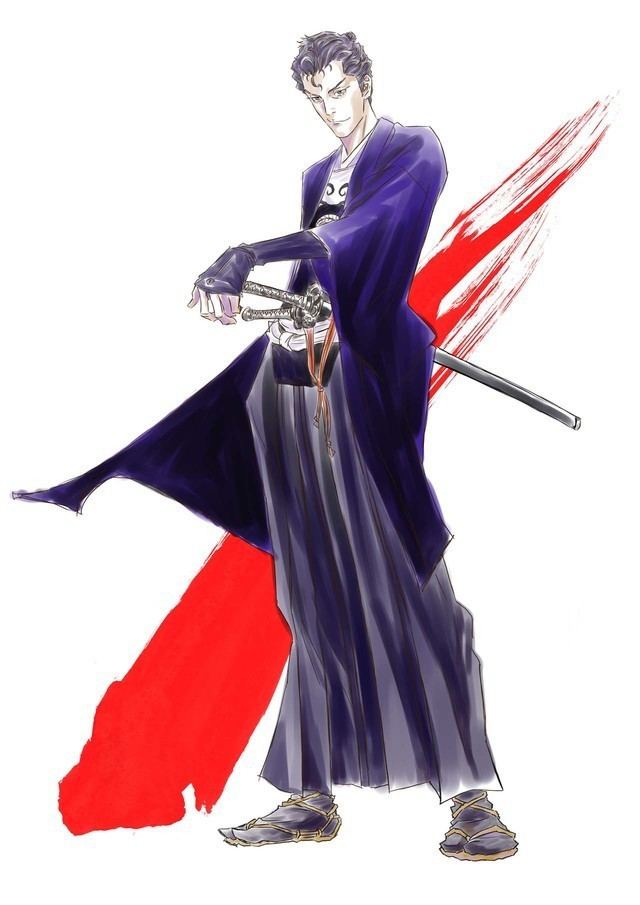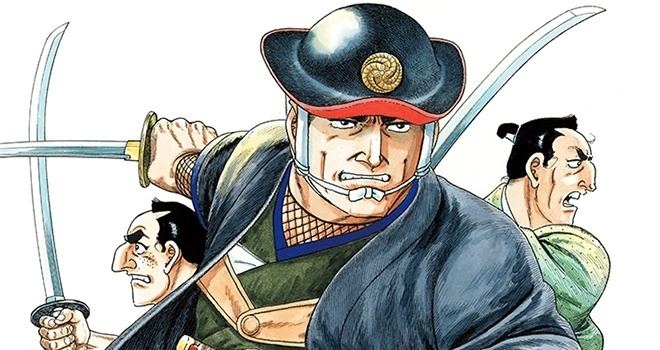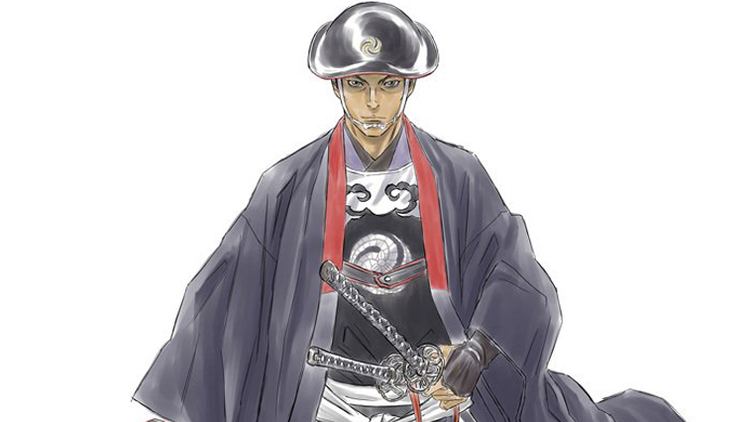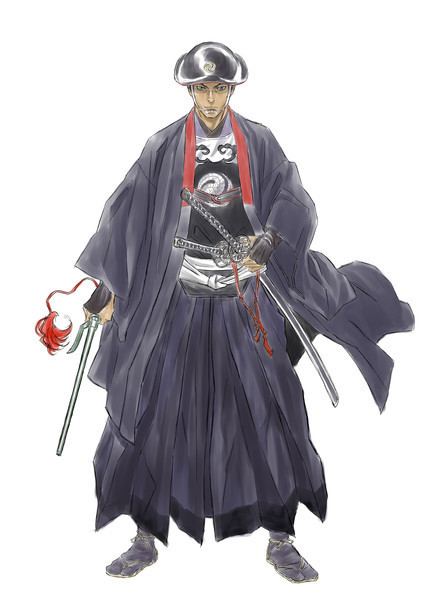7.2 /10 1 Votes7.2
7.1/10 MyAnimeList Original run 1993 – present | 6.1/10 IMDb 8.3/10 Nautiljon Magazine Comic Ran Volumes 100 | |||||||||||||||||||||||||||||||||
 | ||||||||||||||||||||||||||||||||||
Genre Drama, Historical, Mystery Published by LEED Publishing, Bungeishunjū Nominations Japan Academy Prize for Outstanding Performance by an Actor in a Leading Role Similar Gabriel DropOut, Hand Shakers, Urara Meirocho, Ai Mai Mi, Miss Kobayashi's Dragon M | ||||||||||||||||||||||||||||||||||
Onihei Hankachō (鬼平犯科帳) is a series of Japanese historical novels written by Shōtarō Ikenami, and a popular stories of jidaigeki based on it.
Contents

At first, Ikegami wrote the complete novel that Onihei appeared in the December 1967 issue of the light novel magazine "All Yomimono" published by Bungei Shunjū which published the first hard cover the following year. It gained good reputation and was serialised from the next year.

Onihei Hankachō developed into adaptations into TV programs, a film and theater followed. A TV anime adaption aired in 2017.

Story

The title character is Hasegawa Heizō, Hasegawa Nobutame, a historical person who was a Hitsuke Tōzoku Aratamekata Chōkan (Superintendent General of the investigation agency specialized in theft and armed robbery and arson). He started as a chartered libertine before succeeding his father as an heir and was appointed the head of the special police who had jurisdiction over arson-robberies in Edo. Since there was no child between his father and the legitimate wife, he was brought to the Hasegawa family at the age of 17. Heizo was looked down upon by mothers-in-law saying that he was a child by a concubine. He rebelled it and ran away from the house. He became a head of the hoodlums and led a fast life. His street name was "Honjo no Tetsu" which comes from his childhood name "Tetsusaburō." His father died, and he inherited birthright. Nicknamed by the villain "Onihei," meaning "Heizō the demon," he led a band of samurai police and cultivated reformed criminals as informants to solve difficult crimes. Later, he was titled "Hitsuke tōzoku aratamekata" (police force for arson and theft), and opened an office at his official resident. While he was called "demon" and was afraid, he was forgiving and merciful to those who committed a crime out of necessity or are faithful even if they were criminals. He dedicated himself to establish and maintain the Ishikawajima Ninsoku Yoseba which was a vocational training school for criminals, and served concurrently as a Yoseba magistrate for a while.

Four actors, Matsumoto Hakuō I, Tamba Tetsurō and Nakamura Kinnosuke also played the lead in Toho series on NET. More recently, Nakamura Kichiemon II, the younger son of Hakuō I, led a cast in Shochiku production on Fuji Television over 25 years, reputed as the best actor to portray Onihei which has been the highlight of his career aside from plays as a Kabuki actor.
The Fuji series ran from 1989 to 2001, with occasional short series and specials as recently as 2007. Until his death in 2001, Edoya Nekohachi III portrayed the informant Hikojū, often paired with Omasa (Meiko Kaji). Another informant was played by Chōsuke Ikariya. Yumi Takigawa was Hisae, wife of Onihei. Guests have included Akira Emoto, Frankie Sakai, Rokusaburo Michiba, Makoto Fujita, Shima Iwashita, Isuzu Yamada, Yoshizumi Ishihara, and Tetsuro Tamba. The series has been handed to Fuji on the broadcast satellite network (BS Fuji), after the show ended for Fuji on the terrestrial network.
Episodes
In all, 137 stories were published and made into TV programs, mainly by Fuji Television and NET Television (succeeded by Asahi Television). In addition, there are 11 special programs per year since 2005 combining several of those stories into a single episode, on consent by Ikenami himself. BS Fuji reruns serials with additional episodes. For Pay TV on a satellite television, SKY PerfecTV! Premium Service and Jidaigeki Senmon Channel co-produced four extra editions called "Onihei Gaiden". The producers shot the extra edition on film, as they knew Ikegami loved films and called himself a Cinemadict (addicted to cinema/film).
Broadcast programs on satellite are: "Yousagi no Kakuemon" (2011), "Kumagorō no Kao" (2011/2012), "Shōgatsu Yokkano Kyaku" (2012/2013), and "Rōtō Ruten" (2013). A DVD is released for each episode.
Ikegami left a will that the scripts would be true to his Onihei novels, and that he prohibited any episode written by a scriptwriter on his/her own storyline so that when all original Onihei stories were made into scripts, the serial should be ended. The final Onihei episodes is planned as two Onihei Hankachō Specials, with episode #149 "Asakusa Mikuriyagashi" (December 18, 2015) and the final #150 shot in the summer of 2016 for broadcast in two segments in 2016-'17.
Films
"Onihei Hankachō" was released on November 18, 1995, as a film to commemorate the 100th year since Shōchiku was established. DVD was produced later.
Theaters
Heizō was played by Matsumoto Kōshirō VIII (1970-1971), Takahashi Hideki (1978), and Nakamura Kichiemon II has personalized Heizō since the production of 1990. As the company belongs to Shōchiku aside from the 1978 production, most stages are brought on Meiji-za, where Kabuki is performed in Tokyo. Productions were brought to Minami-za in Kyoto as well as Misono-za in Nagoya, the theaters known to stage Kabuki plays as well.
Manga
"Onihei Hankachō (鬼平犯科帳)", gekiga artwork by Saitō Takao, arranged by Kubota Sentarō, published on "Comic Ran" by LEED Publishing CO.,Ltd. from 1993, with hard cover from both LEED and Bungei Shunjū. Arranger was changed to Ōhara Hisazumi since May 2008 issue upon death of Kubota. The story is true to Ikegami Shōtarō's novel, with exceptions as "Wedding of a Thief (『盗賊婚礼』)", and the later works combined Onihei stories with other titles of Ikegami. The story of "Executer Maru (仕置きの○)" is counted as part of the series.
Arcade game
"Sengoku Taisen (戦国大戦 -1615 大坂燃ゆ、世は夢の如く-)" verson 3.1 by Sega Interactive collaborates Onihei story where there is a deck of Heizō is modeled after Hasegawa Masanaga, who was the elder brother of Heizō's ancestor Hasegawa Nobutsugu.
DVD
Onoda Yoshiki, director (2004). Onihei Hankachō - the Film (『鬼平犯科帳 劇場版』) (DVD). Shōchiku. (Japanese)
From Onihei Hankachō - Special series; Ishihara Shigeru, director (2006). Yamabukiya Okatsu (鬼平犯科帳 スペシャル - 『山吹屋お勝』) (DVD). Shōchiku. (Japanese)
Inoue Akira, director (2007). the Villain (鬼平犯科帳 スペシャル - 『兇賊』) (DVD). Shōchiku Home Video. (Japanese)
Inoue Akira, director (2008). Monobrow (鬼平犯科帳スペシャル - 『一本眉』) (DVD). Shōchiku Home Video. (Japanese)
Ishihara Shigeru, director (2012). "Wedding of a Thief (鬼平犯科帳スペシャル - 『盗賊婚礼』) (DVD). Shōchiku. (Japanese)
Anime
An anime television series adaptation by Studio M2 began airing on January 10, 2017. The anime is directed by Shigeyuki Miya who also designs the characters. Masao Maruyama is credited as creative producer with TMS Entertainment in production. An OVA is projected for release on February 22, 2017.
